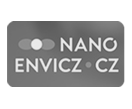Instrumentation of Department of Nanocatalysis
HETEROGENOUS CATALYSIS LABS
Cluster Deposition Apparatus 1 "Little Brother"
- fabrication of mass selected clusters in the range of 1 to several tens of atoms.
- Quadrupole Mass Spectrometer: mass range m/z 10 - 2000 amu; osc. freq. - 1.2 MHz
- GAS Aggregation Source with 1" magnetron driven by MDX 500 DC Power Supply (AE) or Cezar RF Power Generator (AE)
- conical and linear octupoles for collecting and guiding ionic clusters
- QMS DC power suppliers and 150-QC Quadrupole power suppliers (freq. 2.1 MHz, Extrel)
- Ion Bender with Electron Ionizer
- Extrel QMS controller 5500 with 2x Optics Suppliers, Filament Supply, Dynode Supply and Multiplier Supply
Cluster Deposition Apparatus "Big Brother"
- fabrication of mass selected clusters in a wide range of masses, from single atom to nanometer scale clusters.
- 9.5 mm Quadrupole Mass Spectrometer: mass range m/z 10 - 16000 amu; osc. freq. - 440 kHz
- Gas Aggregation Source with 2" magnetron driven by AE MDX 500 DC Power Supply
- conical and linear octupoles for collecting and guiding ionic clusters
- QMS DC power suppliers and 150-QC Quadrupole power suppliers (freq. 2.1 MHz, Extrel)
- Ion Bender
- Extrel QMS controller 5221 with 2x Optics Suppliers, Dynode Supply and Multiplier Supply
Temperature programmed reaction systems (TPR)
- 4 setups for testing the catalytic properties of clusters
- Systems equipped with reaction cell with variable volume 30-60 cm3, turbo pumping station Pfeiffer HiCube 80 Eco, Mass Flow Controllers Brooks (5-500 sccm) to mix up to 4 gases entering the reactor, Kepco power supply for heating the reactor, temperature controllers LakeShore 340 and Eurotherm 2404, heated gas lines with Digi-Sence and Oakton 9500 temperature controllers, Thermofisher thermostat
- Omegadyne DPi8 Temperature & Process Monitor to composition/flow of hydrocarbon-oxygen mixtures
- Products analysis on mass spectrometers Pfeiffer PrismaPlus (1-200 amu)
- Detector Biosystems ToxiPro for CO and Biosystems Multipro for LEL/O2/CO
Auxilliary equipment
- GC Agilent 6890, two channels, detectors FID and TCD, 2x 6-port sampling valve VICI Valco, software Agilent Chemstation
- GC Agilent 7890, two channels, 2x FID, 6-port sampling valve VICI Valco, HPLI sampling device Agilent (for liquids), autosampler Agilent 7683 (100 positions), software Agilent Chemstation
- Microactivity Reference catalytic unit (PID Eng&Tech, Spain)
- Hotbox 180°C max
- high temperature furnace 1000°C max.
- 3 mass flow controllers Bronkhorst (10, 50, 100 ml/min He)
- SS tubular reactor Autoclave Engineers, Hasteloy porous plate (max 750°C), i.d. = 9,2 mm, L = 300 mm
- Quartz reactor i.d. = 9,2 mm, L = 300 mm
- 2x 6 port 2 positions VICI Valco switching valves
- Software Process@
- MicroGC Varian CP-4900, 4 channels with TCD, 4 columns: Molsieve 10m, Al2O3/KCl, 10m, CP-Sil-5CB 8m, PPU 10m, software GalaxieTM
- Laboratory furnace Clasic 1013, 1280°C max. (Clasic CZ)
- Laboratory oven Memmert UFE400 (250°C max.)
- Ultrasonic cleaner Thermofisher Fisherbrand FB 15063H, 12L
- General purpose stirred thermostatic baths/circulators Grant GD120
- Laboratory cooler/heater Julabo F32-MC (-32 to 200°C)
- Temperature controller unit RUF1 equipped with Clare 4.0 controller (Clasic CZ); input - thermocouple J, K, B, S; output solid state relay, max 25 A
- Centrifuge MINISPIN Plus (Eppendorf), 12x1.5ml, max. 14500 rpm
ELECTROCHEMISTRY LABS
Equipment for controlled synthesis and characterization of nanomaterials:
- microwave hydrothermal reactor (Speedwave4, Berghoff, Germany);
- freeze dryer (FreeZone Triad, Labconco, USA);
- chemistry hybrid (RC 6, vacuubrand, Germany);
- tube furnace (R50/500/12, Nabertherm, Germany);
- X-Ray diffractometer (CuKα, Miniflex 600, Rigaku, Japan);
Microscopic and spectroscopic techniques:
- morphology and surface characterization of synthesized nanomaterials
- scanning electron microscope (S4800, Hitachi, Japan);
- EDX detector (Noran System Six, Thermo Scientific, US);
- optical microscope (1MIXS110MT, Haricom, Czech Republic);
Electrochemical techniques:
- (photo)electrochemical characterization of synthesized nanomaterials (CV, linear sweep voltammetry)
- potentiostat (PGSTAT 30, Metrohm Autolab, Netherlands);
- potentiostat (PGSTAT 302N, Metrohm Autolab, Netherlands);
- potentiostat (263A, Princeton Applied Research, US);
- (RRDE) Analytical rotator (AFMSRX E, PINE research, USA);
Electrochemical technique compined with in-situ spectroscopic detection:
- DEMS apparatus consists of quadrupole mass spectrometer (Prisma QMS200, Pfeiffer Vacuum, Germany); turbomolecular pumping station (SU071, PfeifferVacuum, Germany);
Other available equipment:
- pH-meter (3510, JENWAY, UK);
- UV lamp (Bluepoint LED, Honle UV Technology, Germany);
- laboratory balance (EMB-BA-def-1636, KERN, Germany);
- analytical balance (Secura 225D, Sartorius lab Instruments, Germany);
- ultrasonic compact cleaner (Teson 4, Tesla, Czech Republic);
- gas flow meter (FMA-A2403-SS, OMEGA, USA);
- temperature controller (CLARE 4.0, CLASIC, Czech Republic);
- hydraulic press (H-62, Trystom, Czech Republic);
- laboratory centrifuge (ZP3, Chirana, Czech Republic);
- laboratory ovens (UM100, Memmert, Germany);
- muffled oven (1313L, CLASIC, Czech Republic);
- hotplate and stirrer (1000, JENWAY, UK);
















